The Relationship Divide
If you’ve been around the wider Heathen community for any amount of time, then you’ve probably heard this one before. It’s something that comes out whenever people start discussing their relationships and experiences with individual gods. At some point in the conversation, someone will invariably come along and tell everyone that such individual deity relationships are a modern thing. That deity worship was communal – something that was only done as a community. And that the gods are far too important to bother with relationships with lowly individual humans. So stick to your ancestors (at their gravesites) and the local spirits, guys!
But for all the appeals to historical authority in these arguments, I don’t see a lot of actual historical support for them.
A Word on ‘Relationships’
Before getting into the evidence though, I need to clarify what I mean by ‘relationship’ here. Because for most people, the connotation is of a sexual or romantic relationship. And while there are certainly modern practitioners who claim that kind of relationship with certain deities, that is not the only kind of relationship meant here. As we will see, there are a number of types of relationship possible with deities (as there are other humans). My use of the word ‘relationship’ in this post is intended in this more general sense.
Textual Evidence
Generally speaking, modern Heathens tend to be more familiar with the textual sources than archaeological evidence, so this is where we’ll start.
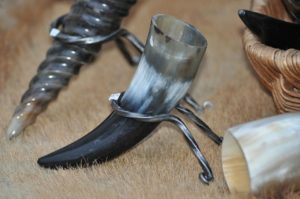
If you are like me, and first encountered Heathenry in the 90s, then you’re probably quite familiar with the term fulltrúi. Everyone seemed to be/have one back then (yay for horrible anglophone understandings of ON terms!). There was definitely a sense that ‘having’ a fulltrúi was part of the ‘Heathen Starter Pack’ (along with a horn, bowl, and hammer pendant).
One of the biggest problems with modern Heathenism is that we all seem to be incapable of being anything but extra AF. We do backlashes like no one else. After over twenty years in Heathenry, I feel like I can almost guarantee that if we go balls to the wall on one thing, a whole other group of us will go balls to the wall in completely the opposite direction. And this is what I suspect lay beneath a lot of the backlash to the use and abuse of fulltrúi back in the late 90s/early 2000s. (For a similar response, see the ‘UPG vs recon’ debate).
Modern fuckery aside though, there is evidence of relationships in which a

deity was described as being the fulltrúi of a person in the primary sources. For example, in cha. 9 of Víga-Glums Saga, a man called Þorkell refers to the god Freyr as his fulltrúi. And in cha. 8 of Eiríks saga rauða , Þórhall refers to Þórr as his fulltrúann. Now it’s worth bearing in mind here that the word fulltrúi held a variety of meanings in Old Norse (as it does in modern Icelandic), and could be used to refer to deities, humans, and inanimate objects alike. Fulltrúi could be a confidant, patron, protector – someone you can fully trust. In modern Icelandic, it tends to refer to someone who is an agent or service representative. So it’s important to realize that the word ‘fulltrúi’ isn’t some specifically religious term.
But in all cases, where it is used, it is indicative of different kinds of relationship.
Other Relationships with Deities: Hrafnkel Edition
But these two examples of fulltrúi are not the only evidence of different kinds of relationships between deities and humans (or worship on an individual level). Another excellent example of a deity-human relationship is that of Hrafnkel and Freyr in Hrafnkels saga. In the second chapter of Hrafnkels saga, we’re told the following:
”Hrafnkel loved no god more than Freyr, and to Freyr had devoted a half share of all his greatest valuables.” (Translation taken from Jón Hnefill Aðalsteinsson A Piece of Horse Liver)
On the surface, Hrafnkels saga seems to be a story about the uselessness of such relationships with deities. Hrafnkel’s behavior as a result of his religious dedication is quite extreme at times (especially from our modern perspective), and that extremism seems to lead to his downfall. Hrafnkel is famous for having jointly kept a horse with Freyr by the name of Freyfaxi, and for swearing an oath to kill anyone who dared to ride him without permission. But as always, such an oath seems to be like that proverbial ‘big red button’ that shouldn’t be pushed, and the sanctity of Freyfaxi is inevitably violated by a herdsman who decides to take the horse for the 10th century equivalent of a ‘joy ride’.
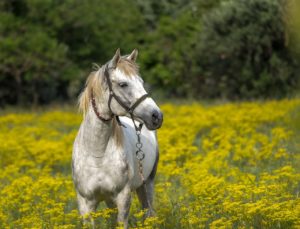
Interestingly, the horse seems to come and inform Hrafnkel of the violation and Hrafnkel sets off to kill the herdsman (Aðalsteinsson 1998, 116-117).
Now if there’s one thing Icelanders seemed to enjoy back in the day (I’m joking here, they didn’t), it was a good, old-fashioned blood feud. And as you might imagine, the herdsman’s father did not take the death of his kid well. To cut a long story short though, this killing started a chain of events that saw Hrafnkel’s temple destroyed, Freyfaxi killed, and Hrafnkel himself in some severe legal shit.
Okay, so that wasn’t that big of a deal compared with other Icelandic feuds (I’m looking at you, Njáls saga!)
In the saga, Hrafnkel’s devotion seems one-sided on his part. Yet as scholars such as Aðalsteinsson have pointed out, it’s no coincidence that the devotee of a god of fertility then went on to experience good luck with his meager livestock, or that great shoals of fish began to appear in the lake near his home. Aðalsteinsson also makes the argument that Hrafnkel’s declaration that he would no more believe in gods is out of keeping with what we know of tenth century Icelandic religion, but that’s another matter and beyond the scope of this post (Aðalsteinsson 124-125).
Other Relationships with Deities: Wife/Priestess of Freyr Edition
It may sound simplistic to say this, but the world of the Viking Age (and before) was not our world, and if we’re being honest with ourselves, would probably be quite alien to us in a lot of respects. This is something that Neil Price acknowledges in the second edition of The Viking Way when he makes the observation that ”we seem reluctant to acknowledge that aspects of these and many other facets of their lives come to us filtered through a world-view that most of us would find incomprehensibly distant, unpalatable, even terrifying.”
Their world was not ours, and this may very well explain the sense of taboo or even mockery towards the concept of sexual and marital relationships with deities.From the perspective of modern humans born and grown in predominantly Christian societies, this is delusion at best, and blasphemous hubris at worst. But if the textual evidence found in Gunnars þáttr helmings is indicative of attitudes towards such relationships in the Heathen period, then party on, deity spouses!
The þáttr is set in around the tenth century (but written in the fourteenth century), and as the name suggests, relates the exploits of a man called Gunnarr.
Now Gunnarr was something of a character. If he were from where I grew up, we’d probably have referred to him as a “ right rum un”, and this “right rum un” was on the run from none other than King Óláfr Tryggvason of Norway. Gunnarr ends up hiding out in a sanctuary in Sweden where he encounters an idol of Freyr and his wife.
Per the þáttr ” it was the peasants’ belief that Freyr was alive, as in some ways it seemed he was, and they thought he would need to have marital relations with his wife.”
Freyr and his wife don’t just stay at the sanctuary though, and Gunnarr obtains

-Gunnarr, maybe.
permission from Freyr’s wife to accompany them in the wagon ‘when he makes the season better for men’. So he goes on the road with Freyr’s wife and the Freyr idol, leading them from place to place until one day they find themselves stuck in a snowstorm on a mountain road. At this point, Freyr’s idol comes to life and fights Gunnarr (+1 points for living idols, yo), and Gunnarr fights back. Unfortunately the story becomes a conversion narrative at this point, because Gunnarr, while getting his ass whooped by idol-Freyr, begs the Christian god to help him in exchange for converting and eventually wins. Then, because Gunnarr was indeed a “right rum un”, he spent a bunch of time telling people he was Freyr, sleeping with Freyr’s wife, and eventually getting her pregnant (North 24-25).
The Swedes for their part didn’t seem to give a shit that the Freyr was now a human man either. They had good weather for their crops and that was the important thing there.
Now, shitty (and rather predictable) conversion narrative aside, assuming this þáttr reflects Heathen period practice with regards to Freyr’s wife, the wider community role of this woman was clear. Her position was not questioned and nor was it taboo. Even when it became somewhat farcical with Gunnarr blatantly pretending to be Freyr, the Swedes were more about the outcome than anything else. As long as the weather did its thing and the crops grew, it was all good.
Archaeological Evidence
In my opinion though, some of the best evidence for individual worship comes from archaeology. There are a number of statues that have been found that are interpreted to represent different gods.
The statues I present here date to the Viking Age. Pay attention to their size!
First we have the Rällinge statuette. As you can see, he’s a very well-endowed 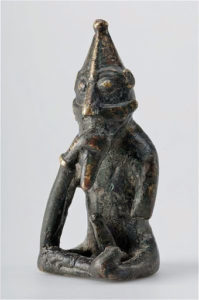 figure. Unsurprisingly, he’s been interpreted as a representation of Freyr. But for all of his blessings beneath the belt, this ‘God of the World’ is all of 7cm/2.75” tall. So, pocket-sized for your convenience. Just ask Ingimund from the Vatnsdæla saga about his missing Freyr amulet..
figure. Unsurprisingly, he’s been interpreted as a representation of Freyr. But for all of his blessings beneath the belt, this ‘God of the World’ is all of 7cm/2.75” tall. So, pocket-sized for your convenience. Just ask Ingimund from the Vatnsdæla saga about his missing Freyr amulet..
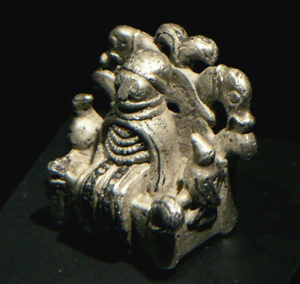
Next up is the one that triggers all the bro types. Yes, it’s this lovely silver and niello figure from Lejre that’s interpreted as Óðinn (but you see he’s wearing lady clothes so that’s bad apparently). Once again, he’s pocket sized for your convenience, measuring only 18mm tall (0.7”).
After that, we have the Eyarland Þórr statuette.
This guy comes in at 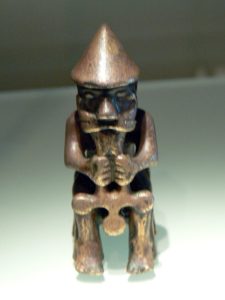 6.7cm/2.6” (with his hammer taking up a good deal of those centimeters/inches).
6.7cm/2.6” (with his hammer taking up a good deal of those centimeters/inches).
Finally, in before anyone can say “but that was Viking Age and a response to Christianity”, here’s the migration period Trollhätten “Tyr” bracteate.

The funny thing about Heathen responses to Christianization is that per Danish archaeologist Lotte Hedeager, the entire myth of Tyr losing his hand was a migration period invention created in response to Christianization (Lotte Hedeager, Iron Age Myth and Materiality, pp 207 – 211). There are literally hundreds of years of Heathen responses to Christianization before what we typically think of as the conversion period in the North.
So what can we take from these statuettes?
They simply don’t make sense for community worship, and as the Vatnsdæla saga story of Ingimund and his Freyr amulet demonstrates, people do seem to have carried personal deity representations. Why would they have done this if only communities looked to gods?
Important Lessons for Modern Relationships
There are more examples I could have included here, but this blog post is already quite long (congratulations for making it this far), so I will move on to summarizing a few of the ‘lessons’ I think we could take from these sources.
The first is despite the examples given here, it seems to have been perfectly fine to just go to community events and do your part to uphold the customs of the community. Then as now, not everyone is going to be Hrafnkell or Þorkell level of relationship. And that’s fine.
One of the coolest things about these sources for me is the way in which people largely just did their own thing and didn’t really overly-concern themselves with what other people were up to in terms of belief and ritual unless it bled out onto the community level. Unless you have good reason to believe that someone is causing harm to others (and especially to those who cannot consent), it’s fine to just let people do what they’re doing. So if someone wants to set up a hof, start a cult around the worship of a preserved horse dick, or start some peripatetic Freyr sex cult, whatever. As long as it’s informed, consensual, and not illegal, go for it! You go get your damn völsi on.
But whatever you do, I think it’s wise to remember that these relationships go both ways, that that trustworthiness isn’t just something to be expected of a deity, but also on our end too. If you consider a deity to be your fulltrúi, ask yourself, are you really a faithful friend to the deity? Because sure, you can’t do nearly as much for them as they do for us, but wise kings always value their trustworthy followers. It’s the same kind of thing here. So don’t rush into these kinds of things, and remember that relationships are not built on oaths alone.
Sources
Jón Hnefill Aðalsteinsson – A Piece of Horse Liver: Myth, Ritual, and Folklore in Old Icelandic Sources
Jón Hnefill Aðalsteinsson – Under the Cloak: A Pagan Ritual Turning Point in the Conversion of Iceland
Lotte Hedeager – Iron Age Myth and Materiality: An Archaeology of Scandinavia AD 400 – 1000
Richard North – Heathen Gods in Old English Literature
Neil Price – The Viking Way: Magic and Mind in Late Iron Age Scandinavia (2nd Ed.)
The Old Norse World
The Saga Database

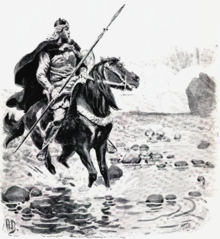
 “whiteness” in this post. When I speak of “whiteness”, I speak of a construct that sits in our society like a gated community that limits its entry to those who fit certain criteria. To reiterate, this is not a post about the the intrinsic and innate, of melanin and ancestry. It is a post about a social construct which actively excludes, harms, and which I believe to be completely incompatible with Witchcraft.
“whiteness” in this post. When I speak of “whiteness”, I speak of a construct that sits in our society like a gated community that limits its entry to those who fit certain criteria. To reiterate, this is not a post about the the intrinsic and innate, of melanin and ancestry. It is a post about a social construct which actively excludes, harms, and which I believe to be completely incompatible with Witchcraft.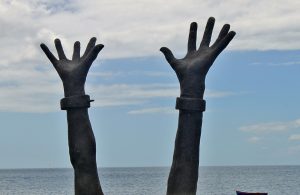 exist. Laws both in the early colonies and Barbados instead focused on religion, setting aside freedoms for Christians and relegating non-Christians to servitude and slavery. However, as times changed and more people of color (both free and enslaved) became Christians, that legal language was changed. The goalposts were moved in order to retain power among the white landowning elite. 1697 saw the passage of the first law that restricted voting rights to only the white
exist. Laws both in the early colonies and Barbados instead focused on religion, setting aside freedoms for Christians and relegating non-Christians to servitude and slavery. However, as times changed and more people of color (both free and enslaved) became Christians, that legal language was changed. The goalposts were moved in order to retain power among the white landowning elite. 1697 saw the passage of the first law that restricted voting rights to only the white 

 Think about the voices you listen to and the voices you give space to and elevate (
Think about the voices you listen to and the voices you give space to and elevate (